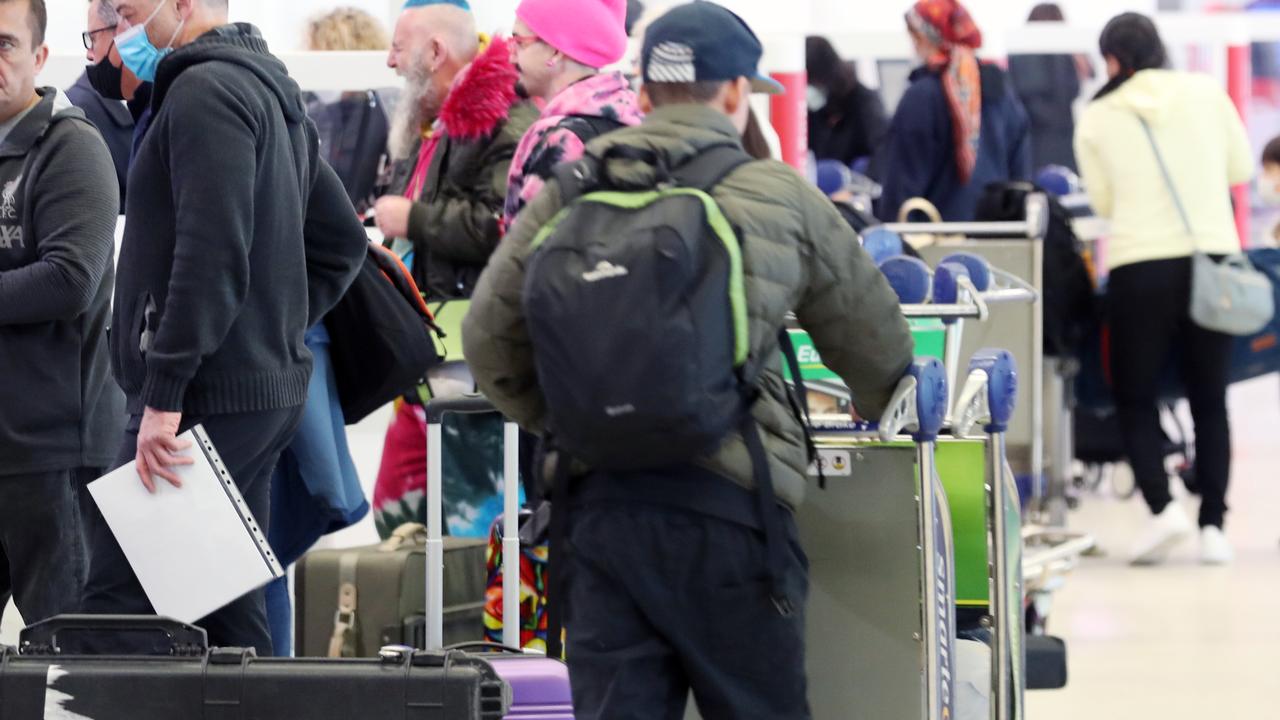Aussies are keener than ever to hop on a plane and escape what has been a pretty rough past few years.
Almost 57 per cent of Aussies are planning a getaway in the next 12 months which is up 49 per cent from December, according to Finder’s Consumer Sentiment Tracker.
However, travel at the moment comes with a heftier than usual price tag.
KAYAK’s data shows the average return economy international flight price in Australia based on flight searches in July (between July 1-18) was approximately $1761 – an increase of about 14 per cent compared to the same period in May (between May 1-18) .
Meanwhile, the consumer price index (CPI) July report shows plane tickets have soared 27.7 per cent on a year-over-year (YoY) basis.
And sadly it is a tendency likely to stick around for a bit longer, according to Angus Kidman, travel expert at Finder.
“Sale fares are definitely higher than they were pre-pandemic. Tiger used to regularly offer $9 domestic fares,” Mr Kidman said.
“We won’t see that again. Jetstar has offered a handful of $22 fares this year, but only outside of peak periods and for a tiny number of seats.”
He said Virgin’s floor in sales is now generally $49, and for Qantas it’s rare to see any sub-$100 flights.
“I don’t expect we’ll see much change to that in 2022. The arrival of new competitor Bonza may create a little price pressure, but many of its routes are regional and I’m expecting that it will be charging well over $100 for a seat most of the time.”
‘On the rise’
Trivago (TRVG) CEO Axel Hefer believes “costs will continue to go up”, attributing it to staffing shortages and labor costs.
“You see a fundamental shortage of people in travel and hospitality, and the reason is that a lot of companies have actually reduced their staffing during the pandemic,” Mr Hefer told Yahoo Finance.
“[Companies] are now struggling in very tight labor markets to staff up again. So they will have to pay up, and that cost will be passed on.”
Flight cancellations
The Bureau of Transportation Statistics quantified that 88,161 flights have been canceled so far this year, with many being attributed to staffing issues.
Virgin Australia, Qantas, and Air New Zealand were all named among the global airlines with the current highest cancellation rates, while Singapore Airlines was noted as the carrier with the lowest cancellation figure.
The new data, compiled by aviation analytics company Cirium, looked at flight data from 19 major airlines in the three months to July 26 which revealed Virgin Australia to have one of the highest cancellation rates at 5.9 per cent.
Air New Zealand and Qantas were also named in the top five airlines with high cancellation rates, at 3.7 and 3.3 per cent respectively.
Singapore Airlines, which remains the top international carrier in Australia, was dubbed the most reliable airline, with a 0.8 per cent cancellation rate.
Notably, of all 19 studied carriers, Virgin boasts the smallest international network, possibly skewing the data, according to Australian Aviation.
Australia’s worst month for flying
Australian airlines recorded their “worst ever” month in June for flight delays and cancellations with a total of 5.8 per cent of all flights canceled – nearly three times more than the long-term cancellation average.
There were 63 per cent of all flights arriving on time in June, with 61.9 per cent departing on schedule, the Bureau of Infrastructure and Transport Research Economics (BITRE) report found.
BITRE said these figures mark “the worst” the industry has seen since records began in November 2003.
The report looked at delays and cancellations across all major Australian airports in the month of June.
The severe disruption was fueled by staffing shortages, staff sicknesses, mid-year school holiday travel surges and severe weather events, including flash flooding throughout NSW.
Qantas recorded the highest percentage of cancellations at 8.1 per cent during the month, followed by QantasLink, Virgin Australia, Jetstar, Virgin Australia Regional Airlines and Rex Airlines.
Qantas recorded just over half of their airlines arrived on time in June, at 59 per cent, while Virgin achieved the highest level of on time departures among the major domestic airlines at 60 per cent.
A Qantas spokesperson told NCA NewsWire the flight delays and cancellations were not the kind of performance that they were delivering pre-Covid.
“A rise in Covid and other illnesses among airline crew as well as the tight labor market led to flight disruptions for all domestic airlines in June,” they said.
“We had rostered additional crew on standby which helped lessen the impact of Covid-related crew absences and meant 85 per cent of our domestic flights for the month departed within an hour of schedule.”
“Flight cancellations in July were lower than they were in June, call center wait times are now better than they were pre-Covid and our mishandled bag rates are close to what they were before the pandemic.”
.

